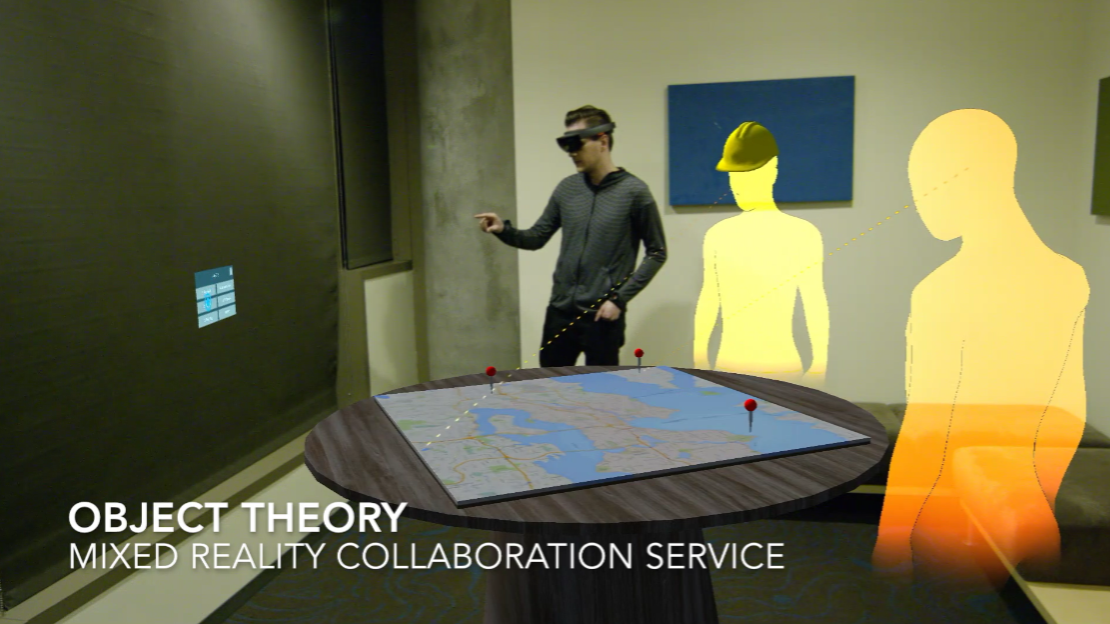 NEWS
NEWS
 NEWS
NEWS
 NEWS
NEWS
Object Theory LLC. is a Microsoft HoloLens partner that is developing the first telepresence collaborative software for augmented reality (AR) Microsoft’s platform. Augmented reality collaboration allows multiple people, separated by geography, to work together as if they are in the same space by projecting avatars of the participants into the space, providing the illusion of presence, and three dimensional object models that can be interacted with by multiple people at once.
The company calls this “Mixed Reality Collaboration” and expects this is the future of collaboration using augmented reality platforms such as Microsoft HoloLens. Object Theory’s software seamlessly integrates HoloLens users and also allows additional participants using PCs, tablets or mobile phones to also engage.
Today, Object Theory announced the release of its mixed reality collaboration service at Microsoft’s Build Developer 2016 Conference in San Francisco.
The HoloLens is an augmented reality platform, this means that it can take what a wearer can see and project 3D “holograms” onto it with a surprising level of fidelity. I personally experienced the capabilities of the HoloLens during a demonstration in Phoenix, AZ in 2015 and that proved it would work extremely well for this purpose.
Using just phones and computers a team can work collaboratively across computer screens but lacks the same sense of “being there” as an actual meeting might. With the HoloLens and Object Theory’s software, collaborators appear in the same room like holographic ghosts, whose gaze can be traced to the part of the model they’re interacting with.
“With our Mixed Reality Collaboration service, Object Theory’s enterprise customers can improve communications effectiveness between dispersed teams, regardless of their location,” said Michael Hoffman, Founding Partner, Object Theory. “This allows for efficient viewing and discussion of the same 3D models as if they were in the same place. The shared experience can easily transition between viewing a miniature ‘situation room’ style model, and walking around within a full scale model.”
Object Theory LLC. provides a “mixed reality collaboration” platform using the HoloLens that can enhance any meeting.
The Microsoft HoloLens is the best example of wearable augmented reality on the market and it is currently the first generation of its kind. With the same respect, Object Theory’s platform is itself a pioneer in this field meaning that it is breaking new ground and showing where AR can go and how it could be used in business.
Using the software, a globally dispersed team can view the same 3D model, interact with it, annotate and modify it, and even get a sense of how other team members are working with the 3D model. Next generations of this software may play more on the social aspects of collaboration such as integrating gestures, postures and body language (something that the Microsoft Kinect can do, if eventually coupled with the HoloLens).
Even without these future advancements, Object Theory’s software has current applications in a large number of spaces including manufacturing, construction, engineering, aerospace, product design, assisted sales, retail space planning, oil and gas, logistics, healthcare, education and scenario training.
For more information on Object Theory and the ever advancing field of augmented reality collaboration details and further information can be found on the company’s website.
THANK YOU